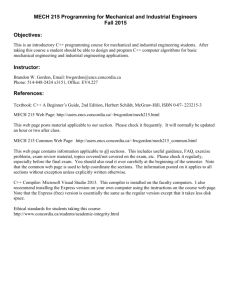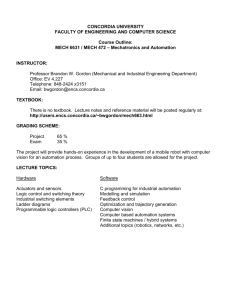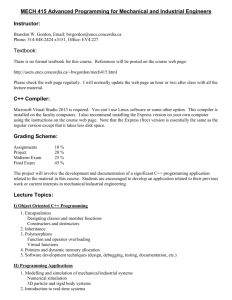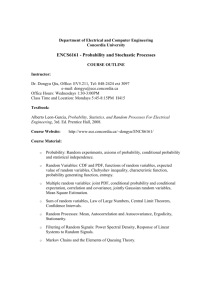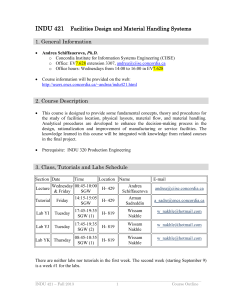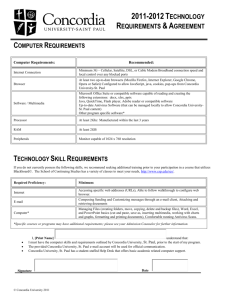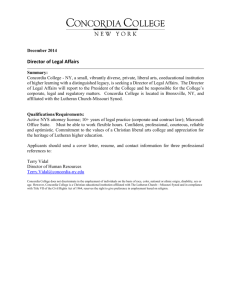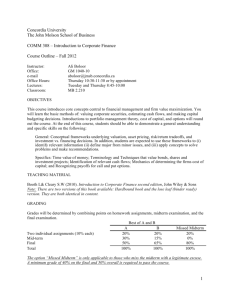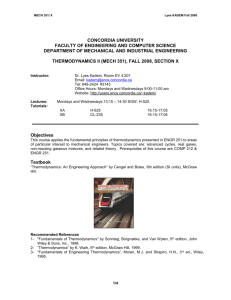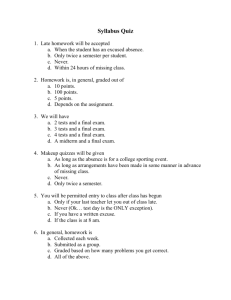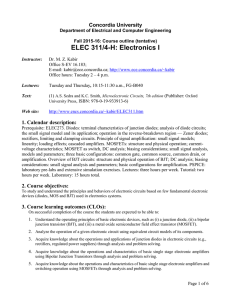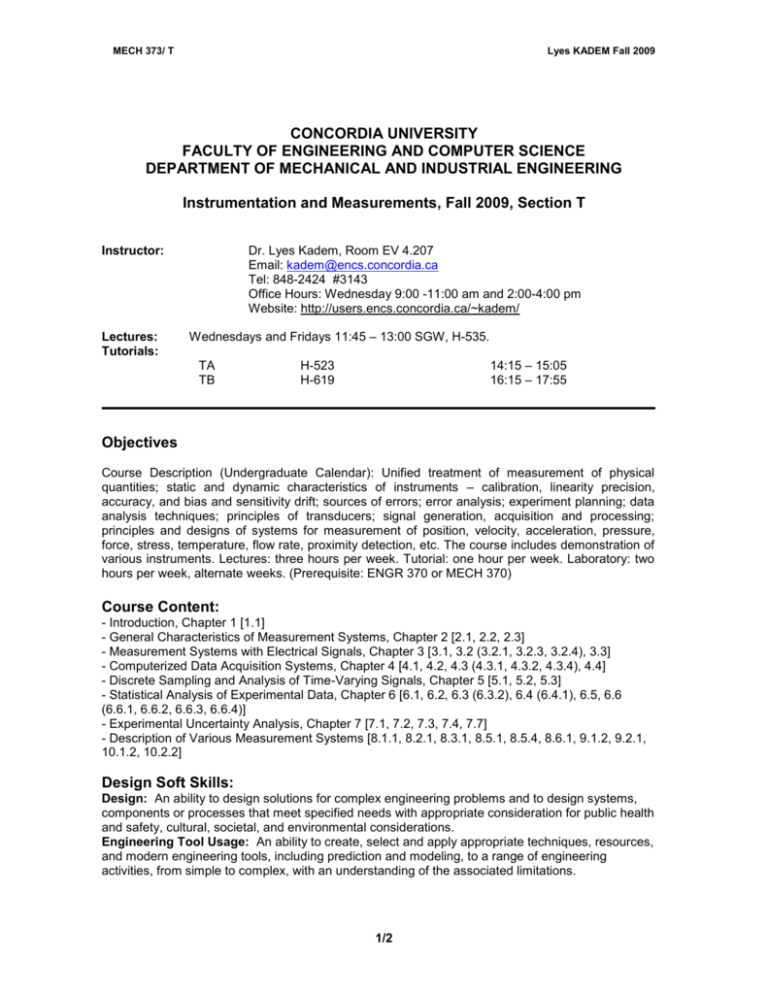
MECH 373/ T
Lyes KADEM Fall 2009
CONCORDIA UNIVERSITY
FACULTY OF ENGINEERING AND COMPUTER SCIENCE
DEPARTMENT OF MECHANICAL AND INDUSTRIAL ENGINEERING
Instrumentation and Measurements, Fall 2009, Section T
Instructor:
Lectures:
Tutorials:
Dr. Lyes Kadem, Room EV 4.207
Email: kadem@encs.concordia.ca
Tel: 848-2424 #3143
Office Hours: Wednesday 9:00 -11:00 am and 2:00-4:00 pm
Website: http://users.encs.concordia.ca/~kadem/
Wednesdays and Fridays 11:45 – 13:00 SGW, H-535.
TA
TB
14:15 – 15:05
16:15 – 17:55
H-523
H-619
Objectives
Course Description (Undergraduate Calendar): Unified treatment of measurement of physical
quantities; static and dynamic characteristics of instruments – calibration, linearity precision,
accuracy, and bias and sensitivity drift; sources of errors; error analysis; experiment planning; data
analysis techniques; principles of transducers; signal generation, acquisition and processing;
principles and designs of systems for measurement of position, velocity, acceleration, pressure,
force, stress, temperature, flow rate, proximity detection, etc. The course includes demonstration of
various instruments. Lectures: three hours per week. Tutorial: one hour per week. Laboratory: two
hours per week, alternate weeks. (Prerequisite: ENGR 370 or MECH 370)
Course Content:
- Introduction, Chapter 1 [1.1]
- General Characteristics of Measurement Systems, Chapter 2 [2.1, 2.2, 2.3]
- Measurement Systems with Electrical Signals, Chapter 3 [3.1, 3.2 (3.2.1, 3.2.3, 3.2.4), 3.3]
- Computerized Data Acquisition Systems, Chapter 4 [4.1, 4.2, 4.3 (4.3.1, 4.3.2, 4.3.4), 4.4]
- Discrete Sampling and Analysis of Time-Varying Signals, Chapter 5 [5.1, 5.2, 5.3]
- Statistical Analysis of Experimental Data, Chapter 6 [6.1, 6.2, 6.3 (6.3.2), 6.4 (6.4.1), 6.5, 6.6
(6.6.1, 6.6.2, 6.6.3, 6.6.4)]
- Experimental Uncertainty Analysis, Chapter 7 [7.1, 7.2, 7.3, 7.4, 7.7]
- Description of Various Measurement Systems [8.1.1, 8.2.1, 8.3.1, 8.5.1, 8.5.4, 8.6.1, 9.1.2, 9.2.1,
10.1.2, 10.2.2]
Design Soft Skills:
Design: An ability to design solutions for complex engineering problems and to design systems,
components or processes that meet specified needs with appropriate consideration for public health
and safety, cultural, societal, and environmental considerations.
Engineering Tool Usage: An ability to create, select and apply appropriate techniques, resources,
and modern engineering tools, including prediction and modeling, to a range of engineering
activities, from simple to complex, with an understanding of the associated limitations.
1/2
MECH 373/ T
Lyes KADEM Fall 2009
Text Book: “Introduction to Engineering Experimentation” by A.J. Wheeler and A.R. Ganji (2
nd edition), Pearson Prentice Hall, 2004.
Grading Scheme:
Quizzes (two) 10%
Midterm exam 20
Laboratories 15%
Final exam 55%
It is compulsory to obtain 50% marks in the laboratory component to obtain a passing grade in the
course.
Quizzes will be based on the questions from the assignments and tutorials.
Important notes:
- Name of student and student ID number must be written in INK in quizzes, mid-term exam and
final exam papers.
- You do not have to submit the assignments.
- The assignment problems and solutions can be downloaded from the course website.
- All quizzes will be held during the tutorial time.
- Midterm exam will be held during the lecture time.
- Only “Faculty Approved Calculators” are allowed in the exams which are SHARP EL-531 or
CASIO FX-300MS.
- Any student who misses both midterm and final exam for any reason will receive the grade “R”.
- All cell phones must be turned off before entering the class.
- Electronic communication devices including cell phones are not allowed in the exams.
- Follow the Code of Conduct set by the Concordia University. Details can be obtained from the
following website. http://relish.concordia.ca/Legal_Counsel/policies/english/AC/Code.html OR See
Section 16.3.13 (page 64) of the undergraduate calendar.
Disclaimer:
"In the event of extraordinary circumstances beyond the University's
control, the content and/or evaluation scheme in this course is subject
to change".
2/2

